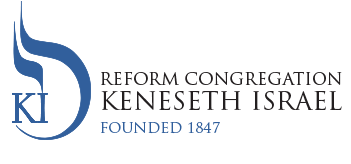During the last month or so while our eyes and thoughts have been trained on the war in Ukraine, another battle, a hidden battle, has also been waging over the future of American Reform Judaism. This is not a battle over territory or a war fought with tanks and missiles. It is a silent spiritual struggle, which will determine the future of the Reform movement in America. It is largely a battle being fought in the hidden recesses of the Internet, in zoom meetings and electronic petitions but it is a battle nevertheless.
At the surface level, it is about the future of the Cincinnati campus, the original site of the Hebrew Union College – Jewish Institute of Religion (HUC-JIR), established in 1875 by Rabbi Isaac Mayer Wise. But in a larger sense, it is a battle about the shape and nature of Reform Judaism in the 21st century. The original Hebrew Union College was founded to train rabbis of all theological flavors for the 19th century. In time, it became the flagship of American Reform Judaism and ultimately, the intellectual anchor for Progressive Judaism and general Jewish scholarship around the world.
No, I am not saying that the “word of the Eternal” shall go forth prophetically from Cincinnati, only that two of the greatest and most precious Jewish and American Jewish research institutions in the history of the Jewish people, the Klau Library with over 500,000 volumes and 14,000 rare Jewish books and the American Jewish Archives with over 10 million pages of documentation, were planted, nurtured and stand on the Cincinnati campus of HUC-JIR. Neither cost nor law will allow them to move elsewhere. Either they remain the premier gardens of Jewish research and intellectual activity tended to by a living community of scholars and students or they become lifeless warehouses of antiquarian remains.
The administration of HUC-JIR and its Board of Governors have fiduciary responsibilities. That is undeniable. But the future of Reform Judaism, the real issue at hand, cannot be solved by a business plan. It needs a spiritual roadmap planned and provided for by all the institutions of liberal Judaism working together for a transcendent cause. We are at an inflection point in our history as a movement. Although we have impressive pockets of strength in the Reform movement, we are undeniably demographically challenged. We are also challenged by a rising generation, which is creating new and unprecedented expressions of Judaism outside the boundaries of congregational and denominational life. Affiliation is shrinking. Jewish identity and spirituality are morphing. Communication inside the Jewish community, indeed, inside the human community, is changing. Downsizing a campus or shuttering a graduate program will not meet the spiritual challenges of the moment or the future.
The true business of Judaism is not to be found in a ledger but in the Jewish heart. The Jewish heart in America is still beating but it is increasingly nurtured and sustained by a different cultural diet than in the past. We need 21st century rabbis. We need 21st century cantors and educators. We need 21st century lay leaders and 21st century congregants or stakeholders or chaverim. We need American Judaisms for every region of the vast, complex North American continent and not just select metropolitan areas.
The American Jewish heart yearns to sing a Jewish song. The Jewish heart yearns to mourn with an authentic Jewish cry. A Jewish child still wants to stand in front of the Torah as much or more than they want a party 80 minutes later because they already know that 80 years after their final aliyah, they want to stand next to their Jewish grandchildren, children who will be of every complexion, and say that they too once stood at Sinai in their youth and in the fullness of their years.
A business plan for the Reform seminary, no matter how good, will never chart that path for us. Only a serious, sustained, collective, transparent conversation about what makes the Jewish heart beat true can be our path. Moses did not know the route of the Exodus. He only knew the “short path” was not the way. Traveling together, receiving the tradition of Torah together, making mistakes together and arriving at the border of the Promised Land together is what our ancestors once did and what we, too, must do. Step by uncertain step, let us find our way out of the wilderness, break the old idols and embrace the spirit of an ancient, living religious tradition with a new song and a new heart!
Shabbat Shalom,
Rabbi Lance J. Sussman, Ph.D.
Hebrew Union College could stop ordaining Reform rabbis in Cincinnati after 147 years
